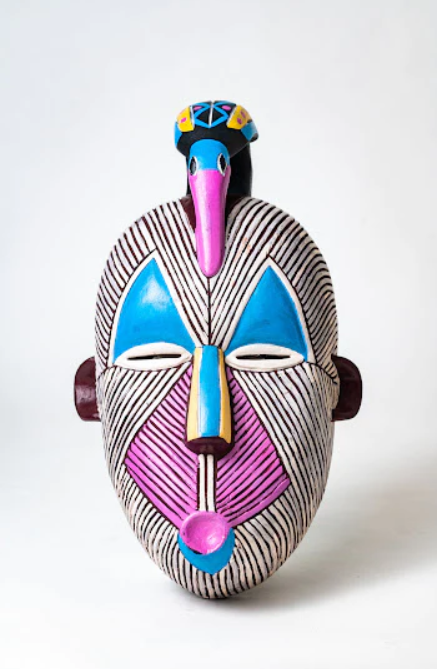Masks are an integral part of West African culture and history. They are used for a variety of purposes, ranging from religious ceremonies to social events and entertainment. Masks are often worn during performances, dances, and festivals and are considered to be powerful symbols that connect people to their ancestors and the spiritual world.
The History of Masks in West Africa
The use of masks in West Africa dates back to ancient times. Masks were used for various purposes, including healing, protection, and initiation ceremonies. They were often made from wood, metal, or other materials and decorated with intricate patterns and designs.
Over time, masks began to play an increasingly important role in West African culture. They were used to mark important events and transitions, such as funerals, weddings, and initiation rites. They were also used to honor the spirits of ancestors and to communicate with the spiritual world.
Types of Masks in West Africa
There are many different types of masks used in West African culture. Some of the most notable include:
-
Dan masks: These masks are used by the Dan people of Ivory Coast and Liberia. They are known for their elongated shape and are often decorated with intricate patterns and designs.
-
Senufo masks: These masks are used by the Senufo people of Ivory Coast, Mali, and Burkina Faso. They are known for their abstract and geometric designs and are often used in initiation ceremonies.
-
Gelede masks: These masks are used by the Yoruba people of Nigeria and Benin. They are often decorated with images of animals and plants and are used in ceremonies to honor the female ancestors.
-
Pende masks: These masks are used by the Pende people of Democratic Republic of Congo. They are known for their exaggerated features and are often used in performances and dances.
-
The Sun Mask: These are traditional masks used by the Dogon people of Mali. It is an intricately designed wooden mask, usually painted red or brown, with a circular shape that represents the sun. The mask features an elongated face with narrow eyes, and it is often decorated with cowrie shells and other intricate patterns.
-
Benin Gold Heads: These bronze heads that were created by the Edo people of Nigeria in the 16th century. The heads depict the powerful and influential leaders of the Kingdom of Benin and are considered to be among the most significant artworks of West Africa.
The Significance of Masks in West African Culture
Masks hold great significance in West African culture. They are considered to be powerful symbols of connection to the spiritual world and are often used to honor the spirits of ancestors. Masks are also used to mark important events and transitions in life, such as birth, marriage, and death.
In addition to their spiritual and cultural significance, masks are also considered to be works of art. They are often decorated with intricate patterns and designs and are valued for their beauty and craftsmanship.
Conclusion
Masks are an important part of West African culture and history. They serve as powerful symbols of connection to the spiritual world and are used for a variety of purposes, ranging from religious ceremonies to social events and entertainment. The diverse range of masks in West African culture is a testament to the rich and fascinating history of the region.


